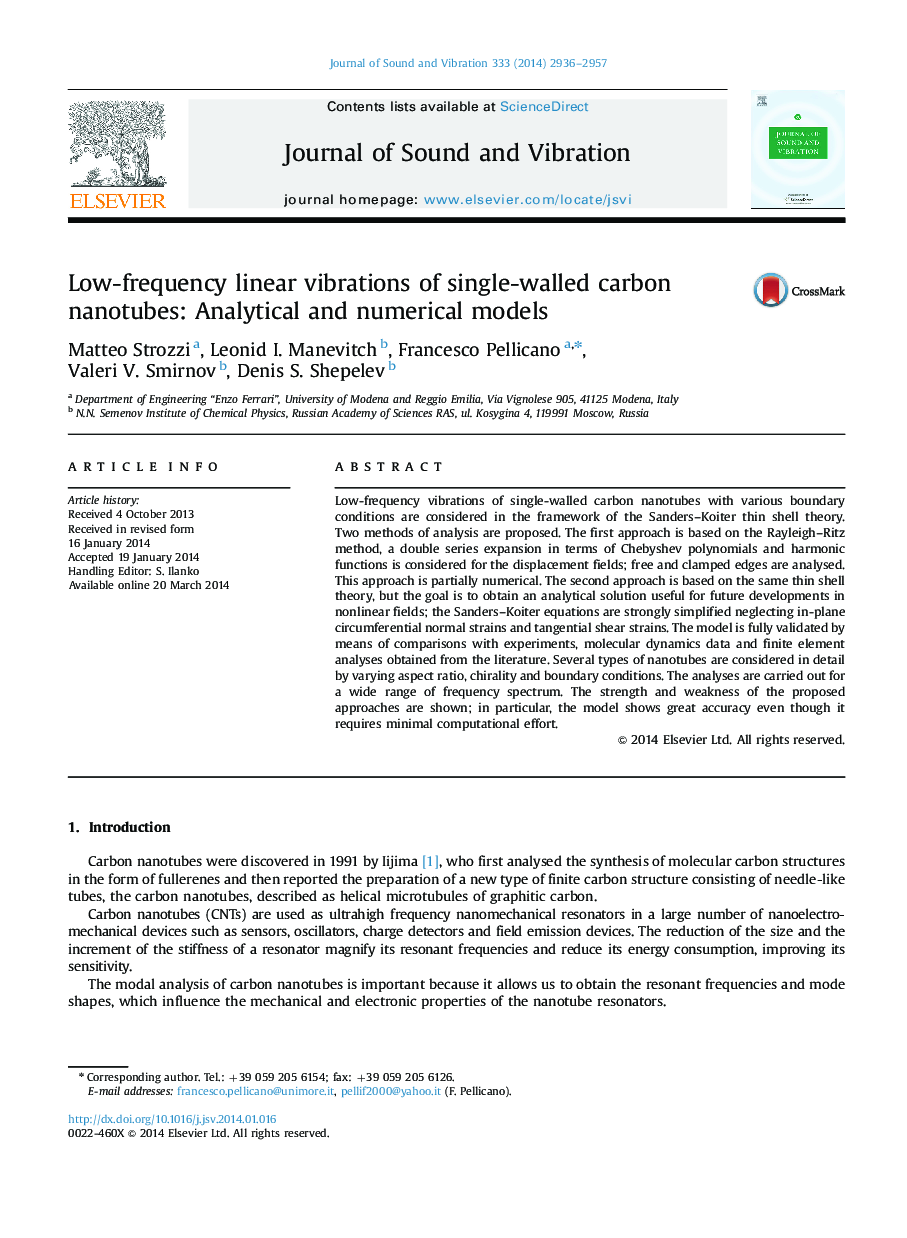| Article ID | Journal | Published Year | Pages | File Type |
|---|---|---|---|---|
| 287557 | Journal of Sound and Vibration | 2014 | 22 Pages |
Low-frequency vibrations of single-walled carbon nanotubes with various boundary conditions are considered in the framework of the Sanders–Koiter thin shell theory. Two methods of analysis are proposed. The first approach is based on the Rayleigh–Ritz method, a double series expansion in terms of Chebyshev polynomials and harmonic functions is considered for the displacement fields; free and clamped edges are analysed. This approach is partially numerical. The second approach is based on the same thin shell theory, but the goal is to obtain an analytical solution useful for future developments in nonlinear fields; the Sanders–Koiter equations are strongly simplified neglecting in-plane circumferential normal strains and tangential shear strains. The model is fully validated by means of comparisons with experiments, molecular dynamics data and finite element analyses obtained from the literature. Several types of nanotubes are considered in detail by varying aspect ratio, chirality and boundary conditions. The analyses are carried out for a wide range of frequency spectrum. The strength and weakness of the proposed approaches are shown; in particular, the model shows great accuracy even though it requires minimal computational effort.
